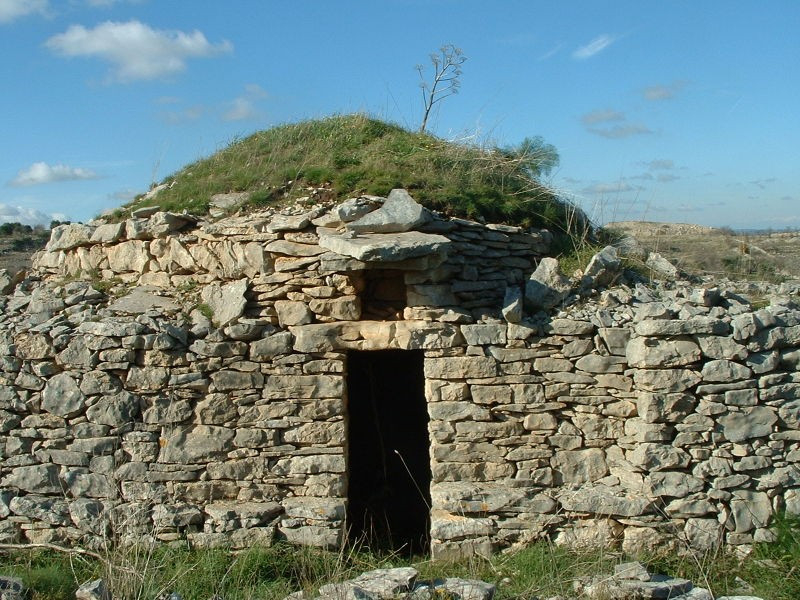Destinazioni - Comune
Corato
Where
Corato (Bari)
Corato is a town and comune in Italy. It is located in the Bari province of the Puglia (Apulia) region, in southeastern Italy. Founded by the Normans, it became subject to Alfonso V, king of Aragon, at the end of the 15th century, and later to the Carafa family. The chief feature of the old town centre, which is surrounded by modern buildings, is the Romanesque church. It is a twin city of Grenoble, France, where many Coratini immigrated during the twentieth century.
History
Corato was a little village. The year that marks the beginning of Corato's history is 1046; Pietro il Normanno occupied the few houses of the farmers and founded Corato. Pietro decided to endow this little town of some elements:a castle, four angular towers,the perimetery enclosing walls,four access doors,two main perpendicular streets. These elements, typical of a mediaeval town, were preserved until the 16th century; this was a particular thriving moment for the private aristocratic building. From the 17th century Corato started to extend from all four sides of the Norman falling walls, in fact from this period and the following centuries the town saw the big construction of churches and palaces that belonged to aristocracy. Today Corato is an important agricultural and industrial centre of the hinterland of Bari, placed 43 kilometres (27 mi) west from it and at 232 metres (761 ft) above sea level. The patron saint of the town is San Cataldo.
Town emblem
Corato's emblem is composed by four towers and one heart. The four towers were built in the Middle Ages by Roberto il Guiscardo, a Norman warrior to defend Corato by enemy's attacks. Today these towers are no more there. There's the heart because the Italian word "cuore" (that means heart) is more similar at the name Corato: under it there is a Latin sentence that means "heart without stain of betrayal" that was dedicated to Corato's people from Corradino of Svevia.
Main sights
The town-hall was built in the 16th century and at the beginning it was a monastery. In this monastery there were monks, but when this order was suppressed in 1866 the monastery became a town-hall. -The Dome is the Corato's oldest church together with the San Vito church. The Dome was built in the 12th century. Its style is Romanesque and it's characterised by simplicity and essentiality. On the portal there are statues of Jesus Christ, the Virgin and St. John the Baptist. -De Mattis Palace was built in the 15th century. Its feature is the stone with diamond point which cover the first level of the palace. At the corner we can see Patroni Griffi's emblem, an aristocratic family which owned this palace. The emblem represents a griffon (Griffi's coat of arms ) and a hand which holds an anchor (Patroni's coat of arms). -Catalano Palace was built in the 15th century. Between the ground floor and the first floor there's a string course ledge decorated by hunting scenes. Under the balcony we can see an epigraph which reminds the Catalanus master. At the corner there are the most important elements of this palace: the human faces that had the power to chase the adversity. -The museum was the town prison and it was built in 1903. The prison has a squared structure subdivided in nine rooms (prisoners cells), which today host several evidences of Corato's history. The museum presents two sections: an historical-archeological section and an anthropological section. In all rooms there are informative panels and some cds which reproduce typical sounds of a historical period or of an agricultural activity.
Historical–cultural tour: palaces, streets, churches
1. Town-hall 2. Maria S.S. Incoronata church 3. Santa Maria Maggiore church (the Dome) 4. Ripoli Arch 5. Di Vagno square 6. De Mattis Palace 7. Catalano Palace 8. Gentile Palace 9. Gioia Palace - Sedile square 10. Matteo Renato Imbriani monument
Historical–cultural tour: churches
1. Maria S.S. Incoronata church 2. San Domenico monastery 3. San Benedetto church 4. San Vito church 5. Santa Maria Maggiore church
Town twinning
Corato is twinned with:
Grenoble, France
References
External links
Official website

